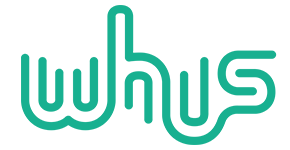The concept of the audience is more important than you think. We’re always in awe about the popularity of celebrities, YouTubers, radio personalities, musicians… and yet, none of the aforementioned parties could have risen to fame without the support of their fans…
This is the overly optimistic view that I really want to believe and I’m not gonna lie, still grappling with. As much as I’d like to think that the people are the ones who actually hold the power, it’s significantly more complicated in reality.
There’s definitely examples where the audience has been seen making the calls. One example is with musicians on YouTube. Take a look at Lana Del Rey, for example. Her career didn’t really take off until her homemade music video for “Video Games’ went viral in 2012, paving the way for her success (yes, yes I had to make a reference to Lana. If you’re one of my friends reading this and didn’t already expect it then shame on you. If you’re someone I don’t know then you’re forgiven).
At the same time, though, we have the YouTube algorithm promoting certain artists’ content over others, an opposing force that pressures us to engage with carefully selected content because YouTube wants to make money. Don’t even get me started on those targeted ads that we’re forced to painfully sit through at the beginning of each video right now; I’ll be touching upon that topic shortly.
In any case, the media is heavily intertwined with politics and economics. Noam Chomsky, whom I mentioned in the last post about media control, also co-wrote a book called Manufacturing Consent. I recently watched a short video narrated by Amy Goodman, an American broadcast journalist, on Chomsky’s “5 Filters of the Mass Media Machine.” This topic is one of the main focuses in Manufacturing Consent, from which I’ve read a few excerpts.
Essentially, Chomsky argues that mass media is structured to carry out a propaganda-like function within society without explicitly coercing society. You certainly don’t need to be living in an authoritarian place such as North Korea to be the victim of propaganda. Every government, political group, or party vying to influence society has utilized it at one point or another. It’s a fact. It just seems a little less obvious in some places because the propaganda is fed to the public in a distorted manner via the Five Filters, according to Chomsky. They are as follows:
- Ownership/Profitability
- Advertising
- The media elite
- Flak
- The common enemy
The first filter, ownership and profitability, deals with the fact that a lot of the large corporations that produce media are driven by one major goal: making a profit. “The dominant media firms are quite large businesses; they are controlled by very wealthy people or by managers who are subject to sharp constraints by owners and other market-profit-oriented forces; and they are closely interlocked, and have important common interests, with other major corporations, banks, and government” (6).
Large businesses need to cover their costs and their wealthy owners and stockholders want to see profits being made. Therefore, it’s not enough for them to just create content for content’s sake to please people. People within mass media corporations need to create content that sells because they face far more stringent economic pressures than say, a small radio station.
This is where I come to a little bit of a crossroads; I know that there are content creators out there who truly want to serve the public instead of exploiting them for a profit like some managers of corporations. At the same time, some content creators are sell outs who want a big slice of the pie as well. That’s why it’s a bit of a struggle to tackle this topic, quite honestly.
In any case, I’d like to give a brief example in the context of something that’s very hot in the news and media right now: the newest global pandemic, COVID-19.
I don’t want to go into a long winded discussion about COVID-19 itself since you most likely are quite familiar with it. What I do want to go into, however, is how the media is operating within this global pandemic. Everything on the news, internet, social media, etc revolves around the virus and has been for the past few months. Reporters, news anchors, celebrities, etc are producing all sorts of information and content to inform the public about the situation.
One of my friends is a journalist in Los Angeles, and how she explained it to me was as such: that she and her fellow reporters simply report on statistics, cases and stories to inform the public on the situation. How the public reacts is a different story. Therefore, I conclude that on a lower level (employees of media corporations), people are genuinely trying to work in the interest of society and raise awareness. As far as shareholders and high-level employees in the firm are concerned, I’m inclined to believe they’re taking advantage of the situation in the interest of profit. This is only my best guess and I can’t confirm it for certain, but it seems highly likely.
The ownership and profit filter segues nicely into the next filter: advertising. Ad revenue is a core component of profit for mass media organizations. I completely understand that media corporations need to pay their employees, journalists, purchase broadcast equipment etc. The financial pressures make it necessary from them to broadcast ads and so mass media corporations are at the mercy of their advertisers in most situations. Either run the ads, or suffer financially and risk not running content at all. This also allows advertisers to have more control over what content the media actually produces. “Advertisers will want, more generally, to avoid programs with serious complexities and disturbing controversies that interfere with the ‘buying mood’” (9).
Media corporations thus have their hands tied, and are stuck between catering to their patrons or freely creating content in the interest of the public. I must acknowledge that this is a very broad statement, though, and the situation is much more complex than just “media organizations are slaves to the economy/government.” I’m not an expert and I won’t claim to be one.
Moving on, the third filter is the media elite. The idea behind this filter is that the patrons of mass media corporations are the gatekeepers for content creators. “Because of their services, continuous contact on the beat, and mutual dependency, the powerful can use personal relationships, threats, and rewards to further influence and coerce the media. The media may feel obligated to carry extremely dubious stories and mute criticism in order not to offend their sources and disturb a close relationship” (12). This is the “hands tied behind their back” situation I was talking about for content creators in mass media corporations.
I once read an excellent book by Croatian reporter and journalist Slavenka Drakulic called How We Survived Communism and Even Laughed, in which she recounts her life in communist Croatia. One of Drakulic’s anecdotes came to my mind immediately when I was watching the video about the five filters. The anecdote is as follows:
Drakulic’s colleague Tanja wrote a very controversial story and the newspaper she worked for issued an apology stating that an error [Tanja’s article] had been published. Tanja was a “disobedient journalist” in the eyes of the party and letting her unwanted opinion slip into the paper was a mistake made by the editorial board. The media elite essentially control the ebb and flow of content that is processed and presented to the general public, as well as who gets to present the content. Routine, privileged news sources (often large media corporations) generally tend to have more power within the media while smaller and non-routine sources struggle (12). It’s always difficult to become a part of any elite group, and becoming a media elite is no exception.
The fourth filter is flak which “refers to negative responses to a media statement or program” (14). Flak is a power tool that can either be extremely detrimental or incredibly useful to a media organization. For example, one organization, sponsor, patron etc. could attack another’s content and potentially damage the other’s reputation. Political authorities could use flak to their advantage and control media organizations to an extent by portraying them in a negative light and damaging their reputations.
By consequence, the media and content creators are forced to create/promote acceptable content in the eyes of their patrons and sponsors. “The producers of flak add to one another’s strength and reinforce the command of political authority in its news-management activities.
The government is a major producer of flak, regularly assailing, threatening, and “correcting” the media, trying to contain any deviations from the established line” (15). Here we can see a connection with the Slavenka Drakulic anecdote I mentioned while exploring the media elite filter. The government and other organizations in charge strive to keep the media in check, which is a known fact, but it looks like they have more control than we’d like to believe.
And finally, we reach the fifth and last filter — the common enemy. Chomsky originally called this the anti-communism filter, but since the end of the Cold War, the War on Terror has emerged. Essentially, the goal here is to rouse the populace against a common enemy. The media is a vital tool in doing so because of its ability to influence the general public via the content it creates (think of the Red Scare).
From newspapers to tv shows to radio programmes, mass media is a strong influencer in our everyday lives whether we like to believe it or not. It can happen explicitly, implicitly, subconsciously — you name it. The common enemy filter is particularly powerful because of how it can sway and shape the general public’s mentality to the benefit of the government, for example.
And that’s a wrap — those are the 5 Filters of the Mass Media Machine! Now, why exactly are the five filters important on the whole? Why did I just spend so much time analyzing and exploring them? Because the media has a lot more influence on our opinions and what’s deemed popular in our culture than we want to think. The five filters distort what news and content actually become available for the general public.
I must acknowledge that there’s always political and economic agendas being carried out, whether in plain sight or behind the scenes. It’s easier to see in a communist country because under communism, the media is directly controlled by the government.
In the USA however, our democratic system technically permits freedom of the press, but the government/shareholders/sponsors of the media have their ways of pressuring the media without explicitly controlling them. That’s why it’s a bit harder to see media control at work within democratic nations; the principles may be sound and honest, but people in power have ways of creating loopholes.
The filters are the bridges connecting mass media with politics, economics and the general public. It’s kind of like a triangle. Powerful media organizations face pressures from their sponsors/the government/other forces, which impacts the type and quality of information we, the general public, receive. We don’t call the shots as much as we think we do and that’s why it’s important to be a critical thinker when it comes to processing media content. We need to sort through the information with some skepticism and become more aware rather than blindly believe and follow (something that I highlighted when discussing media control in the last post).
Until next time, my friends, where we’ll explore the wonderful world of censorship (with a focus on FCC rules and regulations).


